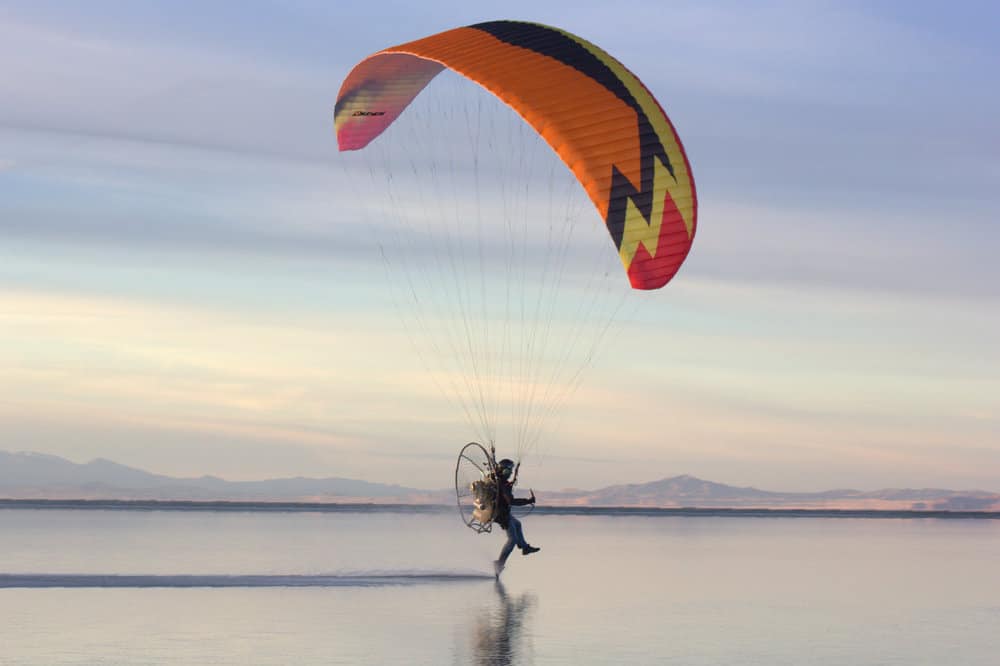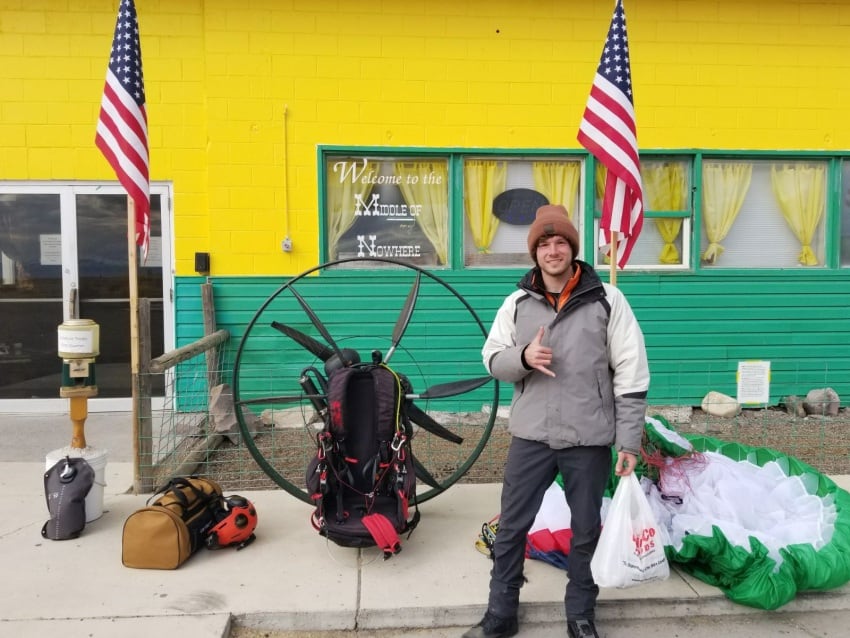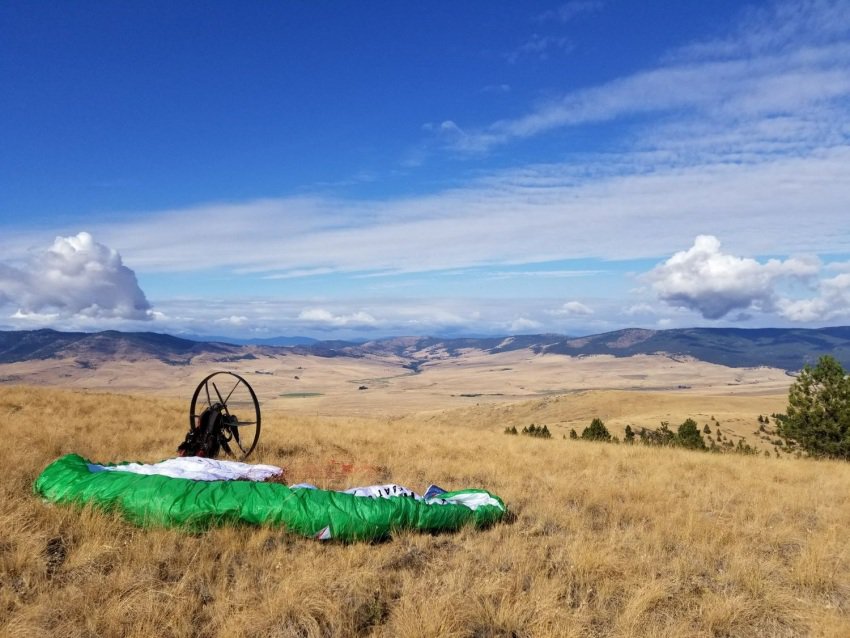
2018’s Race Will Take Flyers Across Africa, from Johannesburg to Victoria Falls
By Brian Gage
“And then I thought, f-ck me, that is the best way of flying around places I have ever heard of. It seemed to me to be unbelievable that no one had already organized a long-distance paramotor adventure like this. So then we had to.” —Tom Morgan (Mr. Tom), Founder of the Adventurists and the Icarus Trophy
Have you ever dreamt of soaring through the sky like an eagle, untethered to any sort of vessel, and just taking in the breathtaking landscapes of the earth beneath your wings? Well so have the creators of the Icarus Trophy, the world’s largest and most dynamic paramotor race on the planet.
And while they haven’t quite worked out the kinks on how to nix the ornithopter, they’ve done amazing work on creating absolutely fantastic courses that take competitors on the aerial adventure of a lifetime.

1000-mile Course
Started in 2015 by internationally acclaimed generators of chaos, The Adventurists, The Icarus Trophy race takes entrants on a ~1000-mile course across some of the most challenging landscapes our world has to offer, with nothing but a banana-shaped wing connected to an aluminum-framed backpack to keep them cruising.
In addition, the created courses essentially just consist of a start and endpoint and some mandatory stops, giving flyers a whole boatload of freedom to decide their route.
While no prior experience paramotoring is required to participate, the courses are widely considered to be some of the most difficult treks in the history of the sport, so it is definitely recommended to train and prepare beforehand.
Contestants are given an official race tracker to keep track of their location and minimize the possibility of incidents, but are required to pack their own equipment, food, clothes, and a fairly comprehensive survival kit, as well as a radio for communications and a cornucopia of required paperwork, not limited to insurance, travel visas, permits and communication permissions depending on the location of the intended race.
Races
The 2015 race was held between Eatonville, Washington and Valley Springs, California, showcasing some of the United States’ most iconic landscapes and giving contestants a glimpse of the American west coast that not many people will ever get to see.
The route took the brave pilots through blinding monsoons and cloud-covered airspace, forcing many daring tree landings and anxiety-inducing passages through inopportune weather patterns. Ed Hamilton, a 2015 Adventure Division competitor had this to say about his experience:
“You’re sore, stiff, tired, haven’t had a shower, hungry, thirsty, and you have to push yourself to get up. But then the adrenaline flow’s again and you remember why you get up to do it. The worst bit was when the rain started. The monsoon rain for the last twenty minutes of the flight; that was really uncomfortable.
Flying in the Rain
I had never flown in the rain and have no idea of what effect that has on the wing, so that was shit scary. I went all giddy inside and started giggling when we landed. I think it was adrenaline and a certain amount of satisfaction with doing that pass, which people said couldn’t be done.”— Ed Hamilton – 2015 Adventure Division Competitor
The 2016 and 2017 races took contestants all the way from Glacier National Park in Montana to Las Vegas, Nevada and the Greater Moab Area respectively, adding more grueling elevation to the course. This added height caused a technical challenge for flyers, as high-elevation launches require the utmost technique in order to successfully lift off.
Pilots encountered snow, wind, and scorching heat throughout their five-state journey passing through Montana, Idaho, Utah, Arizona, and Nevada. The dynamic landscape below offered an amazing range of scenery for contestants, consisting of plentiful mountains, wide prairies, the shimmering heat of deserts, bone dry salt flats, sprawling canyons and valleys, plateaus, lava fields, red rocks, and spectacularly bending rivers and creeks.
Dean Kelly, a 2016 Adventure Division competitor had this to say about his aerial escapade:

“I flew through hail, then rain, then snow and then through the worst turbulence I’ve ever experienced in my 80 hours of flying this beautiful sport. It was the best leg yet.” —Dean Kelly – 2016 Adventure Division Competitor
And Tucker Gott, champion of the 2017 Icarus Trophy competition was overwhelmingly thankful for his ability to experience something so incomparable:
“I approached the race with the goal of completing the course safely and flying to the best of my ability. It was an amazing challenge and the adventure far exceeded my expectations. Thanks so much!”— Tucker Gott – Icarus Trophy Champion 2017
The Adventurists have also pioneered a new set of races for those looking to get their first taste of intensive paramotoring without going all in on one of their massive Icarus Trophy races.
The Icarus X Series races are global and rapidly expanding competitions that take contestants on a fast-paced, exhilarating weekend adventure over hundreds of miles.
Flyers spend the weekend battling the elements and camping where they land in an attempt to be crowned victor of their respective division, with winners of the Race division being granted free entry into the larger annual Icarus Trophy competition.
Prospective competitors should be prepared to demonstrate their proficiency with a paramotor before being allowed to fly, and if one is clueless on how to use the equipment, prior training will be necessary. The Icarus X Series races have so far taken place in several US locations, the UK, South Africa and Australia.
Still, the most difficult task one can undertake with a paramotor, these races are just not quite as much of a commitment as their granddaddy, the Icarus Trophy.
The upcoming 2018 race is set to take place from July 25th-Agust 1st in an entirely new landscape, as the Icarus Trophy begins its exciting expansion across the globe with a bang.

For the first time in its history, the Icarus Trophy race will take place outside of America in the beautiful and exotic region of South Africa.
Finding its starting point just north of Johannesburg at the legendary Bill Harrop’s Balloon Safari, the race will wind its way north until reaching its conclusion near Victoria Falls in Zimbabwe.
With such a massive relocation comes an entirely new set of obstacles for contestants, introducing international borders into the mixer, which necessitates a minimum number of passport stamps from each participating country upon finishing the race.
Flyers will have to touch down before each international border to go through an official border crossing procedure before they can continue to travel their route.
Seeing how the race takes place in Africa, visitors from other parts of the world should be prepared to encounter very different, and quite possibly dangerous, wildlife during their time.
And in contrast to previous races, the 2018 race’s location will necessitate some very long flights, so make sure to start training your bladder now! While this may seem a daunting reality for many prospective flyers, never fret.
There are options in place so that every entrant is able to enjoy their time in the sky and complete their race in any manner that they see fit.
The Icarus Trophy is truly the aerial adventure of a lifetime, and I have yet to hear about someone who has taken part and regretted their experience.

If you’re interested in signing up, reading up on what it takes to prepare for a race, or simply just want to watch some people fly around on wild little gliders, you can head to the Icarus Trophy’s website at www.icarustrophy.com.
The sky is calling, may your gas tanks remain full and the winds remain strong at your back. Fly on!
“It’s showing people what you can actually achieve on these aircrafts” —David Wainwright, Race Division Icarus Trophy Supreme Champion 2015 & 2016

- A Summer of Excitement at Dallas’ Perot Museum - February 20, 2023
- Yoga, Soul, Rock & Roll With Michael Franti - August 28, 2018
- A Healthy Dose of Heritage At The National Constitution Center - August 27, 2018

